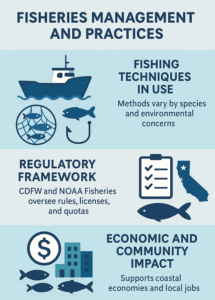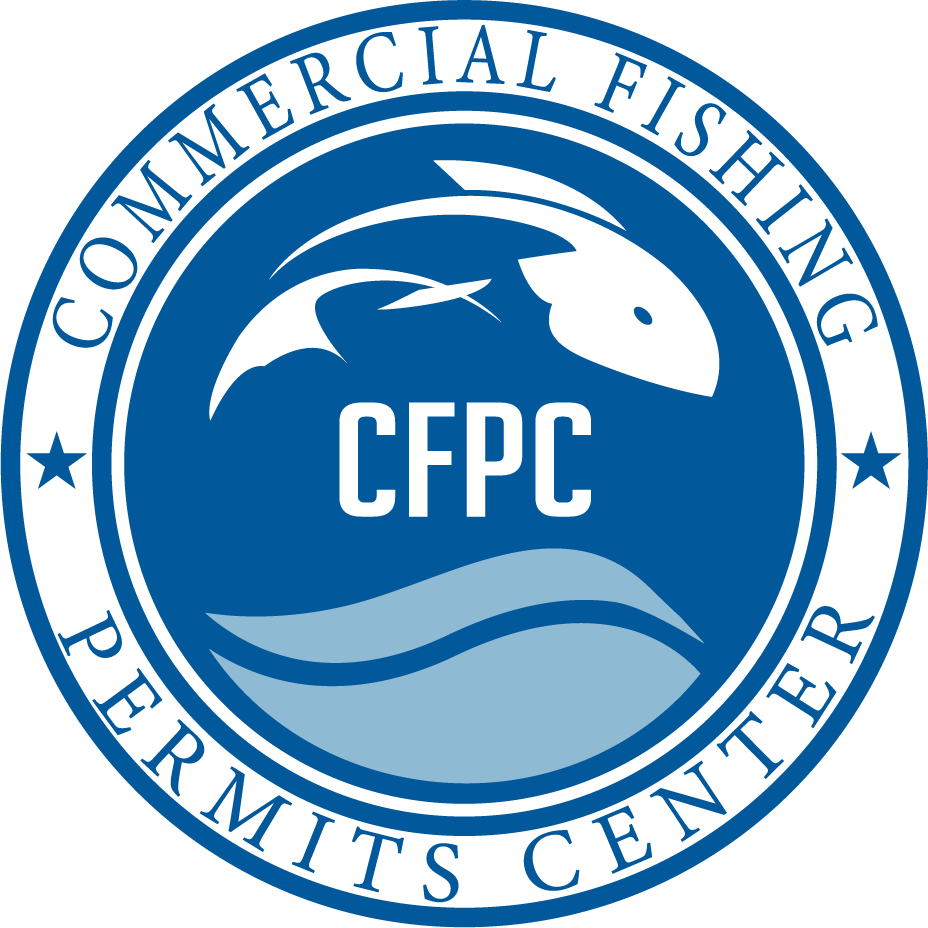The coast of California is home to the fisheries that are the most diverse and hold immense economic value in the whole United States. The commercial fisheries from the lower to the upper scale provide seafood for both the local and the international markets. The California Commercial Fisheries Guide acts as a map for comprehending the industry’s methods, rules, and sustainability measures.
Fishing in California is about combining the old ways, new technologies, and saving the environment. With the implementation of strict regulations and the use of different techniques, the industry is providing a model for the harvesting of resources in a sustainable way and at the same time supporting thousands of people who make a living from it. Through this article, we have covered the basics, detailed procedures, comparisons, and the provision of practical guidance that makes one get an accurate reflection of commercial fisheries in California.
Overview of California’s Commercial Fisheries
California’s fisheries are managed through a combination of federal and state regulations. The industry’s success lies in its ability to provide seafood while maintaining ecological balance.
- Diverse Species: Includes sardines, squid, tuna, salmon, and groundfish.
- Strict Regulations: Designed to prevent overfishing and protect marine ecosystems.
- Economic Value: Fisheries contribute billions annually to California’s economy.
- Sustainability Focus: Balances productivity with long-term ocean health.
| Species | Fishing Method | Peak Season | Export Value | Sustainability Rating |
|---|---|---|---|---|
| Pacific Sardine | Purse Seining | Summer | High | Moderate |
| Market Squid | Seine Nets | Winter–Spring | Very High | High |
| Chinook Salmon | Gillnet / Trolling | Spring–Fall | Moderate | High |
| Groundfish | Trawling | Year-Round | High | Moderate |
This diversity demonstrates why California remains a leading player in American fisheries.
Detailed Aspects of Fisheries Management and Practices
California’s commercial fisheries have several strict monitoring processes in place that guarantee them both profitability and sustainability.

Fishing Techniques in Use
Some of the techniques differ depending on the animal species and if the environment is to be taken into account. Purse seining is commonly used for sardines and trolling for salmon is preferred in order to eliminate the unwanted catch. Although trawling might be the most efficient method, it is still subject to strict control because of the potential for habitat destruction.
Regulatory Framework
The California Department of Fish and Wildlife (CDFW) is the authority that manages the activities in the state waters whereas the waters that are under federal jurisdiction are regulated by NOAA Fisheries. To ensure the health of fish stocks in the long run, issuing licenses, setting quotas and seasonal closures are some of the measures that are taken.
Economic and Community Impact
Fisheries are the lifeline of the people living in the coastal areas, they are not only the fishermen but also the processed, distributors, and exporters that are supported through the fisheries. The local economies are often largely dependent on the seasonal catches such as squid and salmon.
Comparison of California Fisheries Methods and Impacts
Commercial fisheries have to manage their harvest in a way that it does not negatively affect nature in the long run. However, by comparing the different methods, there are revealed trade-offs between the efficiency of yields and the sustainability of the ecosystems.
The squid fishery is one of the main contributors to exports and has less environmental impact than groundfish operations that rely on trawling and release. However, these fish face lower catches due to stricter controls.
- Squid (Seine Nets): Highest yield with the lowest environmental impact.
- Groundfish (Trawling): High yield but also the highest environmental impact.
- Sardine (Purse Seining): Strong yield with moderate impact.
- Salmon (Trolling): Moderate yield combined with low impact, showing a balanced option.
This illustrates how different methods balance productivity with ecological responsibility.
Practical Tips for Navigating California Fisheries
If an individual is thinking about joining the industry or is already a part of it, then it is true to say that his preparation and knowledge will be the keys that will make him successful.
- Understand Regulations – Always keep CDFW and NOAA rules and regulations.
- Choose Methods Wisely – Match gear and activities to the species and quotas.
- Invest in Compliance Tools – Implement monitoring and reporting technology that will help you avoid penalties.
- Engage in Sustainability – Use practices that not only keep the marine ecosystems safe but also increase your business’ long-term profitability.
Step-by-Step Guide
Implementing practices that will not only ensure legal compliance but at the same time will lead to industry success are include:
- Defining the target species and the fishing area.
- Going through the seasonal regulations and quotas.
- Choosing the right methods and tools.
Producing accurate records of the catch for compliance purposes.
Charting the Future of California Fisheries
The California Commercial Fisheries Guide shines a light on a sector that thrives on being diverse, heavily regulated and focused on sustainability. The range of fisheries from sardines to salmon are the lifeblood of the maritime economy in California. Through understanding of the processes, the laws and the ecological concerns, stakeholders will ensure that they make money while also protecting nature.
California’s fisheries have to deal with lot of difficulties, yet they still manage to survive through creativity and accountability. Any member of this sector would certainly agree that the key to a sustainable success is being well-informed and following the rules. The initial step towards the era of California fisheries is utilizing resources to the full while practicing care.


No Comments
Be the first to start a conversation